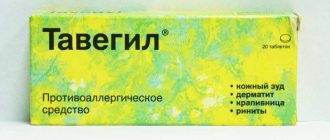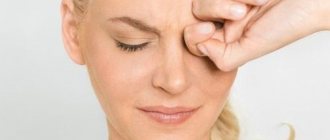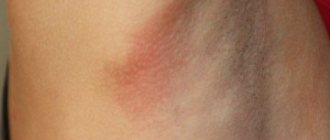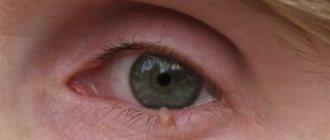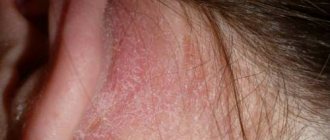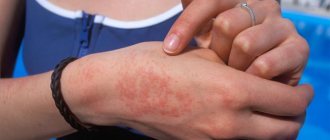Traditional recipes for treating peeling skin under the eyes
If the cause of the anomaly does not lie in a serious illness or you simply don’t have time to visit the clinic, try using the gifts of nature and grandma’s recipes.
Some of them are excellent substitutes for medications and successfully fight the disease. However, despite their effectiveness, there is no need to abuse traditional medicine. Before using any recipe, consult your doctor. To prepare a medicinal decoction, no special knowledge or skills are required. Take a tablespoon of herb, pour a glass of boiled water and keep in a closed container until the infusion has cooled. Next, strain it and use it in the following way:
- As lotions. Soak a cotton pad in the liquid and apply to the affected organ of vision for half an hour;
- For washing. Soak a cotton swab well in the solution and wipe the eye in the direction from the nose to the temple;
- For rinsing. Dilute the broth with boiling water in a ratio of 1:5, and irrigate your face with it every time after washing.
If the peeling of the skin under the eyes is caused by not too serious reasons, folk remedies can cope with the unpleasant phenomenon.
To eliminate dryness and flaking, use masks, compresses, lotions and rubbing the skin with ice with the addition of herbs.
Many herbs have miraculous properties that help not only eliminate flaking and dryness, but also tone the skin and give it freshness.
The table shows several recipes for preparing compresses.
| Compress components | How to cook | Effect |
| Chamomile (1 tbsp), water (250 ml). | Steam the dry herb with boiling water and let it brew for half an hour. Keep the compress for 10 minutes, repeat morning and evening. | Relieves peeling, irritation, soothes the skin. |
| Linden flowers (1/2 tbsp), water (250 ml). | Pour boiling water over the flowers and let steep for 1 hour. Strain. Apply a compress to the eyelids for 10 minutes every other day. | Eliminates skin dullness, gives it radiance and elasticity. The skin under the eyes stops peeling. |
| Parsley leaves (2 tbsp.). | Grind the leaves in a blender to release the juice. Blot the discs and apply to the skin of the eyelids for no more than 10 minutes. | Thanks to its rich composition, it actively restores the skin, relieves irritation, and improves blood circulation. |
Due to the fact that 3 quarters of the potato tuber consists of water, potatoes are known not only for their whitening and toning properties for the skin, but also as a means to eliminate dryness and combat peeling under the eyes.
Potatoes contain many vitamins, such as a line of B vitamins, vitamin C, known for its antioxidant properties, vitamin K, selenium and choline.
Vegetables are grated, the juice is squeezed out, and mixed in equal proportions. The lotions are applied for 20-25 minutes; after removal, it is recommended to lubricate the skin with olive or any other vegetable oil.
Read the popular site article:
Clotrimazole ointment, suppositories - instructions for use for women
Peeling of the skin under the eyes can be overcome by regularly making masks from olive or almond oils, which intensively nourish and moisturize the skin.
To do this, you need to moisten gauze or a thick napkin in warm oil and apply it to the skin of the eyelids for 15 minutes. After the mask, wipe the skin with a piece of ice and apply a nourishing cream.
A similar mask can be made from jojoba oil or castor oil.
You can get rid of peeling eyelids using the following folk methods.
You may also be interested in: Zinc ointment for acne - what it is and how it works
Camomile tea
Brew a spoonful of dried chamomile flowers in a cup of boiling water. When the mixture is infused, strain it and moisten cotton pads. Use them as a compress. Also, an infusion diluted with water can be used for rinsing from a pipette. This product helps relieve eye fatigue, eliminate irritation and dry skin. In addition, chamomile has bactericidal and regenerating properties.
Tea brewing
For eye diseases or fatigue, it is useful to make lotions with tea leaves. It is best to use sheet materials, but bags will also work. Both green and black tea are used.
It will also be useful: Types of acne on the face
Aloe juice
To obtain a suitable consistency, you must leave the cut aloe leaf in the refrigerator. In 1-2 weeks the juice will ferment and become more liquid. Use it to lubricate the skin of your eyelids. Aloe is a regenerating, antimicrobial, moisturizing agent, relieves irritation and redness.
Prevention
Often, peeling and many ophthalmological disorders are easier to prevent than to eliminate later. To do this, you need to follow the following recommendations:
- exclude possible allergens;
- replace contact lenses on time (after any infectious diseases, be sure to purchase a new pair);
- use high-quality decorative cosmetics, cleansers and care products;
- remove makeup every evening;
- spend less time at the computer, take regular breaks from work;
- humidify the air in the room;
- do not touch your eyes with dirty hands.
Peeling skin can occur due to frequent stress or lack of vitamins. To prevent the problem, you need to eat foods that contain substances beneficial to the skin:
- dairy products;
- fish;
- liver;
- nuts;
- fresh seasonal fruits and vegetables;
- lean meat;
- liquid (pure water, herbal teas) in an amount of 2 liters per day.
To normalize your emotional state and sleep, it is recommended to drink tea with chamomile and mint, boiled milk with honey at night.
Excessive dryness and flaking of the skin on the upper eyelid is one of the signs of dysfunction of the body or visual system. This symptom cannot be ignored; if it occurs, it is necessary to change your diet, lifestyle and consult a specialist.
Causes of itching
There may be several reasons for this condition. The most common factors that cause itching and redness of the facial skin are dermatological diseases (dermatitis, psoriasis, mild ichthyosis).
Physical reasons
Often the causes of skin irritation can be heat, or vice versa - low temperature, for example, cold wind, high humidity or dry air.
This is due to the fact that the epidermis contains a large number of nerve endings that are sensitive to cold and thermal changes.
Ultraviolet radiation (natural and artificial) with prolonged exposure provokes burns. A person feels as if the skin is on fire, it turns red, and after a while it begins to itch and peel.
Atopic dermatitis
Atopic dermatitis is a manifestation of an allergic reaction.
Its main symptoms are:
- constant itching with redness, which can also appear on the body;
- dryness;
- peeling.
If the rash is scratched, ulcers may form and the face may swell.
Dermatitis is one of the reasons why the face itches. This pathological process can also affect the upper and lower extremities, the torso, however, the most common localization is the eyelids, cheeks and lips.
Mental causes of skin redness
Multiple stresses that often accompany a modern person, emotional instability and a tendency towards depressive disorder can lead to itching, burning and redness on the face.
This is unpleasant not only from a cosmetic point of view. Staying in this state for a long time, a person can undermine his immune system and, thereby, provoke the appearance of eczema and psoriasis.
Psoriasis
Psoriasis is a chronic inflammatory disease. Previously it was believed that psoriasis does not affect the face, but only the limbs, but recent studies have refuted this statement.
The symptoms are:
- itchy redness, as a manifestation of mild inflammation;
- in the worst case, painful, reddened, very itchy plaques;
- peeling.
Most often, psoriasis appears on the forehead, eyebrows and the space between the upper lip and nose.
Vascular diseases
Vegetative-vascular dystonia reduces the tone of skin vessels, which cannot narrow and, as a result, expand. On the chin, cheeks and forehead this manifests itself as redness and itching. All this indicates instability of the nervous system and problems with the autonomic system.
Eczema
Eczema is an inflammatory disease that occurs as a result of exposure to stress and allergic factors. Initially, it manifests itself as irritation on the skin of the face, with the skin constantly itching.
Next, the affected areas turn into blisters, which enlarge and burst over time. Erosion occurs, from which fluid is constantly released. Then scarring occurs, which leads to a cosmetic defect - scars.
Hives
Urticaria is a manifestation of an allergic reaction in the form of a rash that periodically appears and disappears. Acute urticaria occurs as a result of exposure to allergic substances. Redness and itching can occur on any part of the skin, including the face.
You may have a fever and headache. This condition disrupts a person’s sleep for a long time and causes psycho-emotional disorders.
Redness of the skin due to diseases of internal organs
Often problems with internal organs are reflected on the skin.
Some diseases can cause itching and redness on the face:
- Anemic conditions;
- Diabetes;
- Infectious and inflammatory processes;
- Nervous system disorder;
- Kidney diseases;
- Diseases of the gastrointestinal tract.
Seborrhea
When the functional ability of the sebaceous glands is impaired, seborrhea occurs, which is manifested by severe redness and multiple pimples.
Seborrheic dermatitis affects:
- forehead skin;
- eyebrows;
- wings of the nose;
- space above the upper lip.
However, the favorite localization of seborrhea is the scalp.
What is the cause of inflammation
The skin around the eyes can become inflamed due to conjunctivitis, which is the result of mechanical injuries, exposure to chemical factors, or bacterial infections. It can also be caused by natural physiological processes, for example, an ingrown eyelash. But the main reason for the appearance of unpleasant symptoms are diseases that provoke damage to the mucous membrane, as well as soft tissues in this area.
Canaliculitis
A disease caused by infection in the tear ducts. The proliferation of bacteria provokes pain in the corners of the eyes, as well as swelling and redness. Tear production increases, and in addition to the usual tears, an admixture of pus may appear.
Bacteria enter the tear ducts not only from the environment through the opening in the corners, but also through the sinuses. Without treatment, the infection penetrates deeper and can impair visual function, making it much more difficult to relieve inflammation.
Obstruction of the tear ducts
In case of injury or tumor processes, natural tear production is disrupted. Excessive discharge or, conversely, dryness causes discomfort, and an inflammatory process develops on the outer and inner side of the corner of the eye. This pathology can cause visual impairment and often requires surgical intervention.
Causes of peeling eyelids
The most common factors that can be used to explain why the skin on the eyelids peels are:
- allergies or irritation of the epidermis caused by the use of low-quality or expired eye cosmetics;
- seasonal allergies;
- age factor (so-called dry eye syndrome);
- respiratory diseases;
- dry skin;
- hard or chlorinated water;
- contact lenses that were not selected in accordance with all standards, or were stored incorrectly;
- too dry air in the room, where most often there is a person who experiences redness and peeling of the upper eyelid (one or both);
- eye fatigue;
- bad habit of constantly scratching your eyes;
- prolonged sitting at a computer screen;
- using aggressive products to wash or cleanse the skin of the face.
In addition to these factors, peeling and redness of the eyelids can be the result of a foreign object getting into the eyes. In this case, the person will also experience tearing, itching and burning of the eyes. Such irritation of the mucous membrane of the visual organ cannot but affect the condition of the skin of the eyelids.
If the cause of this phenomenon is not associated with serious diseases, then peeling of the skin on the eyelids will go away on its own in a few days. However, if there is any pathology, you should consult a doctor for advice. A thorough examination and modern diagnostic methods will help determine the exact cause of the anomaly.
Pathologies that can lead to peeling of the upper eyelid are:
- Demodicosis, the development of which is caused by hair mites. It can also be diagnosed at home. So, with this disease, the patient experiences redness and flaking on the eyelids, foamy liquid is released from the eyes, and itching and burning are felt. Eyelash loss, increased lacrimation and severe redness of the whites of the eyes are possible.
- Blepharitis. Pathology often develops in people with a weak immune system, as well as with chronic conjunctivitis, vitamin deficiency, and gastrointestinal diseases. Symptoms of the disease can manifest themselves as peeling of the skin of the eyelids, heaviness in the eyes, photophobia, swelling and hyperemia of the eyelids. When the eyelids begin to peel intensely, eyelash loss occurs. There is no need to hesitate: blepharitis is a dangerous disease that can become chronic.
- Conjunctivitis is an eye disease in which there is redness of the whites of the eyes, itching and the presence of purulent discharge. The eyes become swollen and photophobia appears. If the issue of treatment is not addressed in time, the patient’s eyelid skin will begin to peel, not only the upper, but also the lower.
- Barley. This pathology can develop against the background of incompletely cured or often recurrent conjunctivitis. It manifests itself through redness of the eyes and the formation of a lump with pathological contents on the surface of the eyelid (or on its mucous membrane). If the eyelid is peeling, watery eyes and a headache appear, rest assured that your fears are correct – it’s a stye.
- Fungal infections. If the skin on the eyelids is red and peeling, especially in areas where there is hair, the cause of the abnormality may be a yeast fungus. The manifestations of the disease cannot be ignored, as it can be transmitted to others.
- Hormonal imbalance. This pathology can manifest itself in different ways. If, due to an allergy, red spots appear on the eyelids that itch and flake, then with a hormonal imbalance, only the rejection of dead cells of the epidermis is observed. This phenomenon is also not considered normal, but you should not take hormonal medications at your own discretion - leave the choice of medication to a qualified physician so as not to harm yourself.
- Herpes virus infection is another common reason why the skin on the upper eyelid peels. In this case, the epidermis becomes dry and red, and the patient develops blisters on the surface of the eyelids filled with infected fluid. They lead to itching, burning, and painful sensations.
It is extremely rare that the skin on the eyelids peels and itches, indicating the presence of:
- diabetes mellitus type 2;
- liver dysfunction;
- gastrointestinal diseases.
If you cannot independently identify the causes of dry eyelid skin and its peeling, this can only mean that some pathological processes are occurring in the body. The sooner they can be detected, the less dangerous and unpleasant the consequences for human health will be.
Causes of redness in the corner of the eye
There are several types of reasons why this symptom appears:
- Mechanical irritation, for example, from dust, dirt, aerosols, smoke, foreign substances, strong winds, exposure to excessively bright light (for example, welding), prolonged eye strain, injuries;
- Physiological reasons - expansion of the blood vessels of the eye, but without any disruption of its functioning; this can happen with fatigue, drinking alcohol, severe sneezing, physical exertion, eye irritation with contact lenses or glasses if they are incorrectly selected;
- Eye pathologies - can be inflammatory or non-inflammatory in nature;
- Pathological changes in the functioning of other organs - for example, allergic diseases, diabetes mellitus, intoxication with toxic substances, hypertension, etc.
Redness of the outer corner of the eye
It often looks like the consequences of a mechanical impact (as if the eye was rubbed), and there may be peeling of the skin, sometimes with pain. Redness of the outer corner of the eye is less common than the inner corner, and the redness is more often localized on the skin of the eyelid. It can be caused by both an allergic reaction to cosmetics and diseases.
Diseases
- Angular conjunctivitis - affects the corners of the eyes, can be allergic and bacterial, is accompanied by a feeling of dryness, a foreign body in the eye, the flow of tears, and sometimes purulent discharge. In this case, the skin may become covered with small cracks, and the pain intensifies while blinking.
- Ocular herpes - accompanied by swelling of the eyelid, pain, fear of light.
- Regional blepharitis - this also causes thickening of the upper eyelid, swelling, burning and itching, and the formation of crusts.
Redness of the inner corner of the eye
This unpleasant phenomenon can be caused, in addition to those already mentioned, by a number of diseases.
Diseases
- Disruption of the tear duct, which is located closer to the inner corner, or its inflammation - canaliculitis, accompanied by redness of the eyelids, severe discomfort in the corners of the eyes. There are similar signs of obstruction of the tear ducts, with the addition of severe lacrimation.
- Dacryocystitis is an inflammation of the lacrimal sac, with pus secreted from the lacrimal openings and swelling of the skin.
- Ingrown hair - causes redness and pain due to the ingrowth of eyelash hairs under the skin. Unfortunately, it is impossible to cope with this trouble on your own; you won’t be able to see the hair to remove it, and you will have to contact a specialist.
Inflammation of the corners of the eyes in children
Children's eyes are more sensitive than those of adults; their redness begins suddenly and often has physiological causes, such as overexertion, crying or sneezing, dust, or colds.
With decreased immunity or allergies, children often experience conjunctivitis or blepharitis, but there is another serious disease that can lead to blindness - uveitis, or inflammation of the vascular membranes of the eyes.
Inflammation of the corners of the eyes in adults
In addition to the above-mentioned diseases, there are disorders caused by an unhealthy lifestyle. Modern adults tend to overload their eyes with computer work, resulting in diseases such as dry eye syndrome and computer vision syndrome, accompanied by pain in the eyes, which makes it difficult to look at the screen of an electronic device.
Dry eye syndrome, in addition to unpleasant sensations in the corners of the eyes, is also accompanied by a strong reaction to light, up to the inability to be in the sun.
Glasses for oval faces
Those with an oval face shape find it easiest to choose glasses. Almost any model will do. Just make sure the glasses you choose don't protrude beyond the contours of your face.
But take into account that square and rectangular frames best highlight the features of an oval face. Oblong, rounded glasses also look amazing
The cat-eye model always looks win-win, and the same, but more voluminous model will definitely not allow you to go unnoticed. It is better to choose larger square glasses, but be careful with them. They are not suitable for everyone.
Treatment with drugs
Therapy is selected for each patient individually after identifying the factor that triggered the development of the disease
It is important to treat not the manifestation of the disease, but its source. Otherwise, any measures will not bring results.
Most often, medications are the first to hit the target. The doctor may prescribe the following medications:
- Antibiotics. The most commonly prescribed eye drops are Okomistin, Albucid and Tsipromed. For damage to the mucous membrane, tetracycline ointment is used;
- Antiallergic and antihistamine medications. Helps get rid of itching and relieve swelling. This could be Claritin, Loratidine, or hormonal ointments that contain hydrocortisone;
- Antiseptic drugs. Block the spread of pathogenic microorganisms. Use the most gentle means, such as “Vitabakt” or a solution of boric acid;
- To combat the fungus, Levorin or Nystatin is prescribed;
- Antiviral drugs. These include “Anaferon”, “Solcoseryl”;
- If the cause of peeling lies in inflammation, then Sofradex or Maxitrol eye drops will help;
- To relieve visual fatigue, doctors recommend taking Visine.
To strengthen the immune system and increase the body's resistance to negative factors, take a course of Vitrum Vision or Complivit Oftalmo vitamins.
| Often, to get rid of unpleasant symptoms, doctors prescribe topical medications (ointments and drops). They affect the source of the disease and almost never enter the circulatory system. If you need to use several types of drops, use them with a break of fifteen minutes. |
Demodicosis
Scaly blepharitis is a manifestation of demodicosis. This disease is caused by ticks and is seasonal. It manifests itself as an acne-like rash covering the forehead and cheeks, inflammation of the eyelids and flaky skin of the eyebrows.
Treatment of demodicosis takes from one to three months. Special disinfectants are used that relieve inflammation and cleanse the skin. Therapy includes drugs that improve immunity and vitamins. In advanced cases, antibiotics and anti-inflammatory drugs are used.
Regular skin care will help prevent and alleviate the disease. You need to choose cleaning and degreasing products. For cleansing, lotions, chemical peels, scrubs and gommage are used. During treatment, avoid hot procedures such as sauna, steam bath, cosmetics with a warming effect and masks with honey.
The next stage of care is moisturizing. The most suitable are products containing hyaluronic acid.
Folk remedies
First of all, it is worth remembering that folk remedies help reduce symptoms. It is unacceptable to use them as a separate treatment. A parsley compress will soothe irritated eyes.
To do this, you need to place fresh grass in gauze (it is better not to cut it, but to tear it with your hands) and apply it to the skin. Such lotions are good for removing dark circles under the eyes.
A decoction of chamomile or dill seeds will help with reddened skin. The grains are placed in cheesecloth and then in hot water. Chamomile ice will soothe the eyes and itching. To do this you need to pour 1 tbsp. plants with a glass of boiling water, and strain after half an hour.
Then the solution is sent to ice trays. When the product is ready, you can use it to wipe the irritated eyes several times a day. Chamomile ice relieves not only inflammation of the visual organ, but also redness and itching of the skin.
Chamomile decoction is a universal eye antiseptic.
A decoction of dill will relieve swelling and soothe the irritated surface of the face. It is necessary to soak a cotton swab in the broth and place it on the eyelids. After it cools down a little, repeat the procedure. Using the same scheme, an infusion of cornflower is prepared (a glass of the plant per 2 tsp).
For skin diseases, a potato mask is suitable. The raw vegetable must be peeled and chopped using a grater, adding 1 tsp. olive oil.
Then you need to place the paste on several pieces of gauze and roll it up and apply it to the irritated eyes. After 10 minutes, the mask is removed by rinsing the skin with cool water or the decoctions described above.
Homemade masks made from cucumber or raw potatoes are good for swelling
Why does the skin around the eyes peel?
Peeling of the skin under the eyes has various causes, and one of the most popular is improper or irregular care, but it can also be due to health problems. In most cases, when the skin around the eyes peels, people turn to ophthalmologists, who carry out diagnostics or immediately refer the patient to another specialist.
The reason why the skin on the face near the eyes peels may be due to an allergic reaction. By contacting an allergist and starting antihistamine therapy, you will be able to get rid of the disorder as soon as possible.
When the skin around the eye peels and redness occurs, eyelash mites cannot be ruled out. It is able to exist on healthy skin without obvious lesions. To detect a violation, special hardware diagnostics are required.
The skin around the eyes in men and women may begin to peel due to a lack of vitamins in the body. In this regard, it is necessary to constantly monitor your diet, as sometimes the problem is provoked by fatty foods. In addition, itching and dryness occur as a result of insufficient fluid intake. Read more about what vitamins are needed for dry skin in a separate article.
Such subtle reasons as:
- insufficient sleep;
- constant stress;
- dirty environment;
- climate (strong wind, frost, strong sun).
Dry skin under the eyes of a child can have quite different causes, but the most common among them are demodicosis, various infections and bacteria (staphylococcus). To treat redness, dryness and peeling in the eye area in children, it is better to consult a doctor immediately.
We figured out why the skin under the eyes peels, and now let’s look at ways to combat the disorder.
Fantasy specialists in pediatric ophthalmology
Bondar Vadim Andreevich - pediatric ophthalmologist. One of the best children's ophthalmologists in Moscow. Specialist in rare eye diseases. Diagnostics and treatment according to the principles of evidence-based medicine. The doctor has 16 years of experience in the treatment of eye diseases, a number of publications on ophthalmology, and active scientific activity in this direction.
Bogorad Maria Vladimirovna is a pediatric ophthalmologist. First category doctor. More than 17 years of experience (MC of the Administration of the President of the Russian Federation, Helmholtz Moscow Research Institute of GB in the emergency department. In treating patients, he is guided by the principles of evidence-based medicine.
Tolmacheva (Ermoshkina) Klavdiya Georgievna - pediatric ophthalmologist. The doctor's specialization: routine examinations of children of all ages, correction of myopia, farsightedness, and astigmatism. Treatment for retinal pathology. Prevention of eye diseases in children. Diagnostics and treatment according to the principles of evidence-based medicine.
Redness and peeling of the skin around the eyes causes severe itching. This symptom may indicate an allergic reaction, inflammation or other skin disease. After diagnosis, the dermatologist carries out treatment. It involves external treatment of lesions and the implementation of drug therapy.
How to deal with swelling?
If you find such unpleasant consequences, you can simply wait until they are eliminated on your own - it will take a few days and they will pass.
This problem may go away after a few days.
The second way is to seek advice from a cosmetologist who performs the procedure. Most likely, he will recommend actions to speed up rehabilitation.
